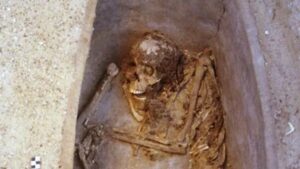“Unlocking the Secrets of the Moon: The Ingenious Strategies That Made NASA’s Historic Landing Possible”
But as the debate raged on over the merits of Direct Ascent vs. Earth Orbit Rendezvous, a third possibility began quietly circulating among NASA engineers – an approach known as Lunar Orbit Rendezvous or LOR. First proposed by the Chance Vought Company in 1960, LOR challenged the primary assumption at the heart of the other proposed mission profiles: that the entire spacecraft had to land on and take off from the lunar surface. Instead, the Chance-Vought engineers proposed constructing a lightweight landing vehicle which the astronauts would use to descend to the lunar surface, leaving the rest of the spacecraft in lunar orbit. Once the astronauts had completed their mission, they would lift off from the lunar surface in the lander, rendezvous and dock with the orbiting spacecraft, and discard the now-redundant lander before returning home. As the lander didn’t need to withstand the stresses of launch and reentry like the main crew capsule, it could be made extremely lightweight, greatly reducing the size and weight of the rocket needed to launch the entire combination to the moon. In July 1961, NASA Langley engineer James Chamberlin – a Canadian who had previously worked on the ill-fated Avro CF-105 Arrow interceptor project – fleshed out this concept in a proposal based on the 2-man Gemini capsule. Along with the capsule itself, his proposed mission would carry one or two simple, open-cockpit lunar landers or “bugs”. On reaching lunar orbit, one of the astronauts would leave the capsule, spacewalk over to the “bug”, and fly it down to the lunar surface. Once his mission was complete, he would lift off, rendezvous with the Gemini, and spacewalk back to the capsule before returning home. Chamberlin calculated that the Gemini-based mission could be accomplished using a single Saturn C-3 – a one million kilogram or 2.2 million pound launch vehicle originally designed for the Earth Orbit Rendezvous approach – and the 2-man Apollo-based mission using the slightly larger C-5. Yet despite its many advantages, Chamberlin’s LOR concept was immediately rejected by NASA as too risky, too limited, and – for the reasons previously mentioned – politically threatening to North American Aviation’s Apollo spacecraft design.











